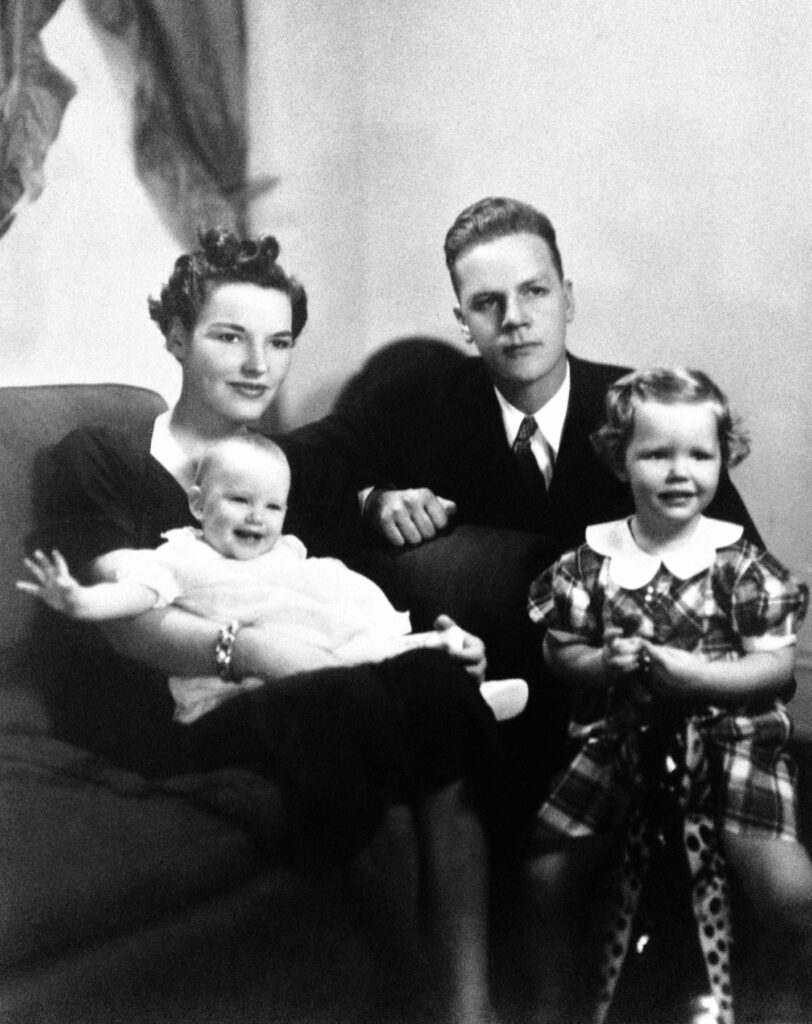Family Roots: Scotland, Alabama, and Tennessee
Alexander “Sandy” Bonnyman Jr. was born on 2 May 1910 in Atlanta, Fulton County, Georgia. He was the son of Alexander Bonnyman Sr. and Frances Rhea Berry. His father was born in Edinburgh, Scotland, and eventually became president of the Blue Diamond Coal Company in Knoxville, Tennessee. His mother came from the prominent Berry and Rhea families connected to north Georgia and Alabama.
The Bonnyman family settled in Knoxville when Sandy was still young. Knoxville quickly became their home base: where his father ran the coal business, where the children were raised, and where the family’s history would circle back in an emotional way decades later.
Sandy grew up with several siblings, including Margot, Anne, and Maj. George Gordon Bonnyman Sr. From a genealogical perspective, the Bonnyman tree is an excellent example of how Scottish and Irish immigrant families blended into American southern history.

Education and Early Years
As a young man, Sandy attended local schools in Knoxville before moving on to a New Jersey prep school. In 1928, he enrolled at Princeton University, where he played football and studied engineering. College life, however, wasn’t the right fit, and he left after his sophomore year. He preferred practical work and responsibility over academic life.
In 1932, he joined the U.S. Army Air Corps as a flying cadet but was honorably discharged after only a few months. That early setback didn’t slow him down. He returned to civilian life, assisted around the family’s business interests, and then moved west.
By the late 1930s, Sandy had purchased a copper mine near Santa Fe, New Mexico. There, he operated a small mining business—an interesting location detail for genealogists looking for records related to the Bonnyman children or local newspaper mentions.
Marriage and Family
During his earlier Air Corps training period, Sandy met Josephine “Jo” Bell in Texas. The two married in February 1933. Many historical references list her as Josephine Bell Bonnyman and later as Josephine Bell Russell after her remarriage.
Sandy and Jo had three daughters: Frances “Fran” Berry Bonnyman, Josephine Bell “Tina” Bonnyman, and Alexandra “Alix” Bonnyman. Each of them would carry his story forward in different ways, through their own lives and families.
At the outbreak of World War II, the family lived in New Mexico. This becomes a helpful detail when tracing birth indexes, census records, or newspaper archives for genealogical documentation.
A War He Didn’t Have to Fight
When World War II began, Sandy was not required to serve. As the operator of a copper mine producing strategic metals, he was already contributing to the war effort on the home front. Despite that exemption, after the attack on Pearl Harbor he felt compelled to enlist.
In 1942, he joined the United States Marine Corps, leaving behind his wife Jo and their three young daughters. He trained as a Marine combat engineer and soon proved himself in the Pacific theater, earning a battlefield commission for his leadership.
Tarawa: Three Days of Extraordinary Courage
In November 1943, First Lieutenant Sandy Bonnyman served with the 2nd Battalion Shore Party, 8th Marines, 2nd Marine Division during the assault on Betio Island in the Tarawa Atoll.
The battle was brutal and chaotic. Marines were pinned down by intense Japanese fire as they tried to advance from the beaches. On his own initiative, Sandy led groups across exposed ground, organized demolition and flamethrower teams, and attacked heavily fortified enemy positions.
During the assault on a massive bombproof Japanese bunker, he crawled forward under fire, placed explosives, and then climbed onto the top of the position to direct the attack. His courageous stand helped break enemy resistance and allowed Marines to advance.
Sandy was mortally wounded during the fighting. Most sources list his death as 22 November 1943. The family would come to mark that week as the moment they lost a husband, father, son, and brother.
The Medal of Honor and a Family Left Waiting
For his bravery at Tarawa, Sandy was posthumously awarded the Medal of Honor. In January 1947, his eldest daughter, Fran, accepted the medal from Secretary of the Navy James Forrestal. The moment was both an honor and a reminder of the sacrifice the family had endured.
Back home, his parents—Alexander Bonnyman Sr. and Frances Rhea Berry—struggled for years to learn the true fate and location of their son’s remains. Postwar military records were incomplete, and for decades the family believed he had been buried at sea. A headstone was placed in the family plot in Knoxville bearing that assumption.
Lost on Betio, Found Decades Later
For more than seven decades, the location of Sandy’s remains was unknown. His name appeared on the Walls of the Missing in Honolulu, but the family lacked the closure of a confirmed burial.
In 2015, the nonprofit group History Flight, working with the Defense POW/MIA Accounting Agency, discovered a burial trench on Betio known as Cemetery 27. Sandy’s grandson was among the volunteers helping with the excavations.
A tall set of remains with distinctive dental features was uncovered, and later DNA testing confirmed that the family had finally found First Lieutenant Alexander “Sandy” Bonnyman Jr.
In September 2015, more than 70 years after his death, Sandy’s remains were returned to Knoxville. He was buried with full military honors in the Bonnyman family plot beneath the same headstone that once marked him as “Buried at Sea.”
His daughters—Fran, Tina, and Alix—attended the service alongside grandchildren, extended family, Marines, and community members who came to honor his return.
Why His Story Matters for Genealogy
From a genealogical and historical standpoint, the story of Alexander “Sandy” Bonnyman Jr. is rich with research opportunities:
- Multiple geographic locations across the U.S. and Pacific to trace records.
- International roots blending Scottish and southern U.S. family lines.
- A wide sibling group whose descendants carry the family story forward.
- A military legacy documented across newspapers, archives, books, and modern research.
His life bridges everyday family history with extraordinary wartime courage, reminding us that behind every headline and military citation is a family whose lives were forever changed.

